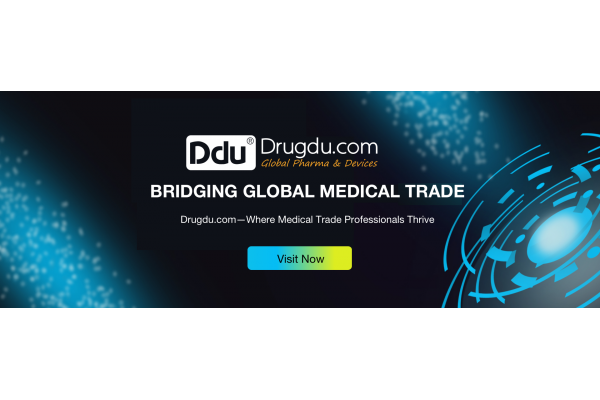【EXPERT Q&A】What is the process for medical device export?
October 21, 2024
Source: drugdu
 251
251
Drugdu.com expert's response:
The process of exporting medical devices involves multiple steps, as detailed below:
Ⅰ. Market Research and Preparation
Target Market Research: Conduct in-depth research on the medical device demand, regulations, standards, and competitors in the target market. Understand factors that may affect transactions, such as the target market's political stability, trade policies, and currency exchange rate fluctuations.
Product Registration and Certification: Complete product registration and certification according to the regulatory requirements of the target market. For example, the European market requires CE certification, and the US market requires FDA registration. Ensure that the products comply with the regulations and standards of the destination country to avoid trade barriers and compliance risks.
Establishing a Sales Network: Establish contact with distributors, agents, or medical institutions in the target market. Participate in international exhibitions, seminars, and other events to communicate face-to-face with potential customers and showcase product advantages.
Ⅱ. Production and Quality Control
Quality Management System: Exporting enterprises need to ensure that their production processes comply with the quality standards and regulatory requirements of the target country. Establish a quality management system and conduct product quality testing and certification.
Preparing Product Quality Inspection Reports: Prepare product quality inspection reports before export to ensure that the products meet relevant standards and requirements.
III. Export Contract Signing
Business Negotiations: Conduct business negotiations with potential buyers to determine key terms such as product price, quantity, and delivery schedule.
Signing the Export Contract: Sign a formal export contract to clarify the rights and obligations of both parties. The contract should include clauses such as product specifications, quantity, price, delivery method, payment terms, and delivery time.
Ⅳ. Export Customs Clearance and Transportation
Applying for an Export License: Exporting enterprises need to apply for an export license from relevant government departments; submit export application forms, product registration certificates, trade documents for the target market, etc.
Handling Export Customs Clearance Procedures: Follow the customs requirements of the target country to handle export customs clearance procedures; fill out export customs declaration forms and provide necessary documents.
Arranging Transportation: Choose appropriate transportation methods (such as sea freight, air freight, etc.) and freight forwarders; ensure that the goods arrive at the destination on time and safely.
Ⅴ. Import Customs Clearance and Delivery
Handling Import Customs Clearance Procedures: After the goods arrive in the target market, handle import customs clearance procedures according to local regulations and requirements, including paying tariffs and providing import licenses.
Goods Delivery: Arrange for the delivery of goods to the buyer. Track the logistics status to ensure that the goods are safely delivered and promptly handle any possible logistics issues.
Ⅵ. After-Sales Service and Feedback
Providing After-Sales Service: After exporting medical devices, enterprises need to provide after-sales service. Through proactive after-sales service, enterprises can enhance buyers' trust and loyalty and promote the establishment of long-term cooperative relationships.
Collecting Feedback: Collect feedback from buyers on the products to continuously improve and optimize them.
VII. Other Considerations
Complying with International Trade Policies: Pay close attention to changes in international trade policies, such as tariff adjustments and trade barriers, to adjust export strategies and market layouts.
Establishing Political Risk Early Warning Mechanisms: Establish political risk early warning mechanisms and regularly update political risk assessment reports for target countries.
Exchange Rate Risk Management: Understand the currency exchange rate fluctuations in the target country, assess the impact of exchange rate fluctuations on export earnings, and adopt appropriate exchange rate risk management measures, such as using forward contracts, options, and other tools to lock in exchange rates.
Supply Chain Risk Management: Strengthen communication and cooperation with suppliers to establish stable supply relationships; establish supply chain risk early warning mechanisms to promptly warn and respond to possible risks.
In summary, the process of exporting medical devices is complex and detailed, requiring enterprises to possess comprehensive market research capabilities, strict regulatory compliance awareness, efficient logistics arrangement abilities, and flexible risk response strategies. At the same time, enterprises should also focus on brand building and customer service to enhance their market competitiveness.

Read more on
- 【EXPERT Q&A】When should the continuation registration process for medical devices be initiated? December 3, 2025
- 【EXPERT Q&A】What is the development trend of the veterinary diagnostic reagent industry? Market Size Continues to Grow December 1, 2025
- 【EXPERT Q&A】What are the requirements of the General Safety and Performance Requirements (GSPR) under the EU medical Device MDR and IVDR regulations? November 28, 2025
- 【EXPERT Q&A】Is it difficult to obtain a medical device business license? How can one apply for it? November 26, 2025
- 【EXPERT Q&A】What is the development trend of the high-end medical equipment industry? November 24, 2025
your submission has already been received.
OK
Subscribe
Please enter a valid Email address!
Submit
The most relevant industry news & insight will be sent to you every two weeks.



